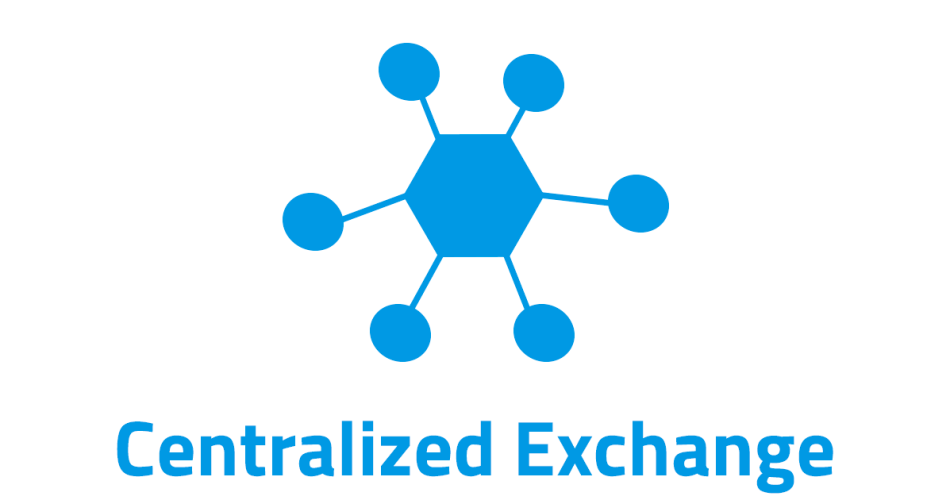Centralized Exchanges (CEXs) are the bustling marketplaces of the crypto world, humming with activity as buyers and sellers converge to trade digital assets. Imagine a high-tech stock exchange, but instead of traditional stocks, the ticker displays a vibrant array of cryptocurrencies like Bitcoin, Ethereum, and Dogecoin. Just like their traditional counterparts, CEXs play a crucial role in facilitating trades, driving prices, and shaping the overall crypto landscape.
Centralized vs. Decentralized: Understanding the Crypto Trading Landscape
Before diving into the specifics of CEXs, it’s essential to understand their place within the broader crypto ecosystem. CEXs belong to the centralized side of the spectrum, meaning they operate under the control of a single entity. This entity acts as a trusted intermediary, managing user accounts, matching buy and sell orders, and ensuring the smooth flow of crypto transactions. In contrast, Decentralized Exchanges (DEXs) operate on a peer-to-peer network, eliminating the need for a central authority. Traders interact directly with each other, swapping assets through smart contracts on the blockchain.
CEXs: A User-Friendly Gateway to the Crypto World
For many newcomers to the crypto world, CEXs offer a user-friendly and familiar entry point. Here’s what makes them so appealing:
- Intuitive Interface: CEXs boast user-friendly interfaces, often resembling traditional stock exchange platforms. This makes them ideal for beginners who might find the complexities of DEXs daunting.
- High Liquidity: CEXs typically attract a large user base, leading to a higher volume of trading activity and greater liquidity. This means finding buyers and sellers for your desired trades becomes easier and faster, with smaller price fluctuations compared to less liquid markets.
- Fiat Gateways: Most CEXs allow users to directly purchase cryptocurrencies with fiat currencies like USD or EUR. This eliminates the need for additional steps like using peer-to-peer exchanges, making entry into the crypto world much smoother.
- Advanced Features: Many CEXs offer a range of sophisticated trading tools, including margin trading, stop-loss orders, and technical analysis charting. These tools cater to experienced traders seeking greater control over their crypto investments.
Beyond Convenience: Weighing the Trade-Offs of Centralization
While CEXs offer undeniable advantages, centralization comes with its own set of trade-offs:
- Single Point of Failure: Being centralized introduces a vulnerability. If the exchange is hacked or experiences technical issues, users’ funds could be at risk. Recent high-profile hacks like Mt. Gox and Coincheck serve as stark reminders of this potential danger.
- Regulatory Scrutiny: CEXs operate under the watchful eye of governments and financial authorities, meaning they may face stricter regulations and KYC/AML compliance requirements. This can add an extra layer of complexity for users and may limit access to certain platforms in certain jurisdictions.
- Counterparty Risk: Users entrust their assets to the exchange, raising concerns about potential mismanagement or loss of funds due to the exchange’s actions. Choosing a reputable exchange with a strong track record of security and transparency is crucial to mitigating this risk.
- Limited Trading Pairs: Not all cryptocurrencies are listed on every CEX. This can restrict trading options for users seeking niche or less established digital assets.
Navigating the CEX Landscape: Choosing the Right Platform
With a multitude of CEXs vying for your attention, selecting the right platform can be overwhelming. Here are some key factors to consider:
- Reputation and Track Record: Opt for established exchanges with a proven track record of security, reliability, and user trust. Look for independent reviews and audits to gain insights into the platform’s operations.
- Supported Cryptocurrencies: Ensure the exchange lists the assets you want to trade. Do your research and prioritize platforms offering the cryptocurrencies that align with your investment goals.
- Fees and Trading Costs: Compare fees across different platforms to find the most cost-effective option. Consider both trading fees and withdrawal fees, as these can significantly impact your profitability.
- Security Measures: Evaluate the exchange’s security protocols, including cold storage for user funds, multi-signature wallets, and two-factor authentication. Look for platforms that prioritize security and implement industry-standard best practices.
- User Interface and Features: Choose a platform with an intuitive interface that suits your trading style and experience level. Consider features like margin trading, order book depth, and charting tools, depending on your trading needs.
Beyond CEXs: Exploring the Decentralized Frontier
While CEXs remain the dominant force in crypto trading, decentralized exchanges are gaining traction, offering an alternative path for those seeking greater autonomy and control over their assets. DEXs operate on a peer-to-peer network, eliminating the need for a central authority. Traders interact directly with each other, swapping assets through smart contracts on the blockchain. This decentralized approach comes with its own set of challenges, including lower liquidity and less user-friendly interfaces, but it also offers potential benefits such as increased security and resistance to censorship.
Ultimately, the choice between CEXs and DEXs depends on your individual needs and risk tolerance. CEXs offer convenience and familiarity, while DEXs prioritize autonomy and control. Whichever path you choose, remember to do your research, prioritize security, and trade responsibly. The exciting world of cryptocurrency awaits, and CEXs are just one entry point in this dynamic and evolving landscape.
Here are a few resources across different levels of detail and perspectives about CEXs:
Informative Articles:
- Investopedia: What is a Centralized Exchange (CEX)?: https://www.coingecko.com/learn/what-are-centralized-crypto-exchanges-cex
- Coindesk: The Beginner’s Guide to Centralized Exchanges: https://www.coindesk.com/tag/binance/
- CoinMarketCap: Centralized vs Decentralized Exchanges: https://coinmarketcap.com/community/articles/64dc5aecfe05822893c880a1/
News and Analysis:
- The Block: Centralized Exchange News: https://www.theblock.co/category/exchanges
- Crypto Briefing: Weekly Centralized Exchange Report: https://www.bitcoininsider.org/article/223480/report-market-share-centralized-crypto-exchanges-trading-volume
- Forbes: The 10 Best Centralized Exchanges in 2024: https://www.forbes.com/sites/javierpaz/2022/03/16/the-best-global-crypto-exchanges/
Regulatory Resources:
- Financial Conduct Authority (UK): Cryptocurrency Regulation: https://www.fca.org.uk/firms/cryptoassets
- Securities and Exchange Commission (US): Crypto Assets and Blockchain: https://www.sec.gov/
- Financial Action Task Force (FATF): Recommendations on Anti-Money Laundering for Virtual Assets: https://www.fatf-gafi.org/en/publications/Fatfrecommendations/Fatf-recommendations.html
